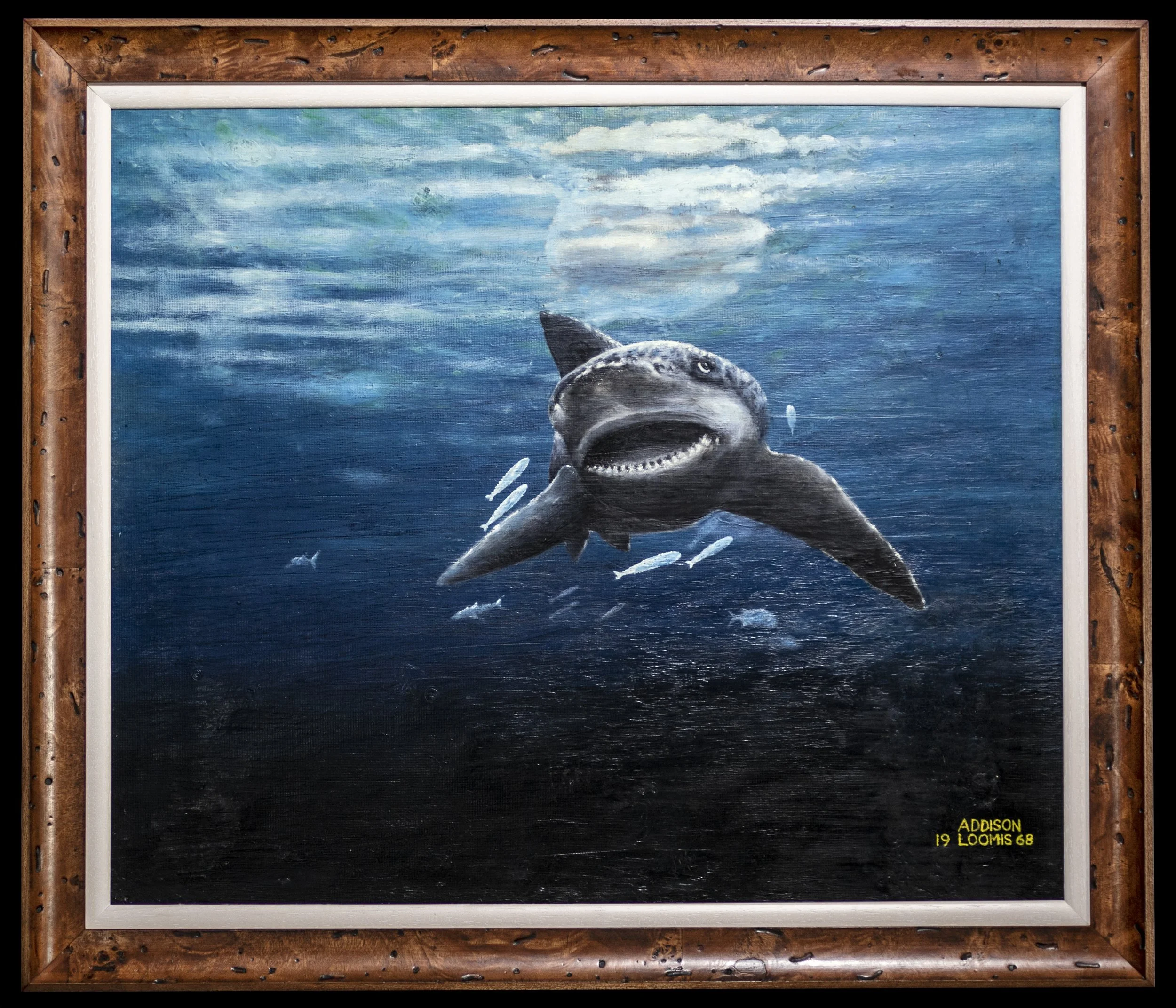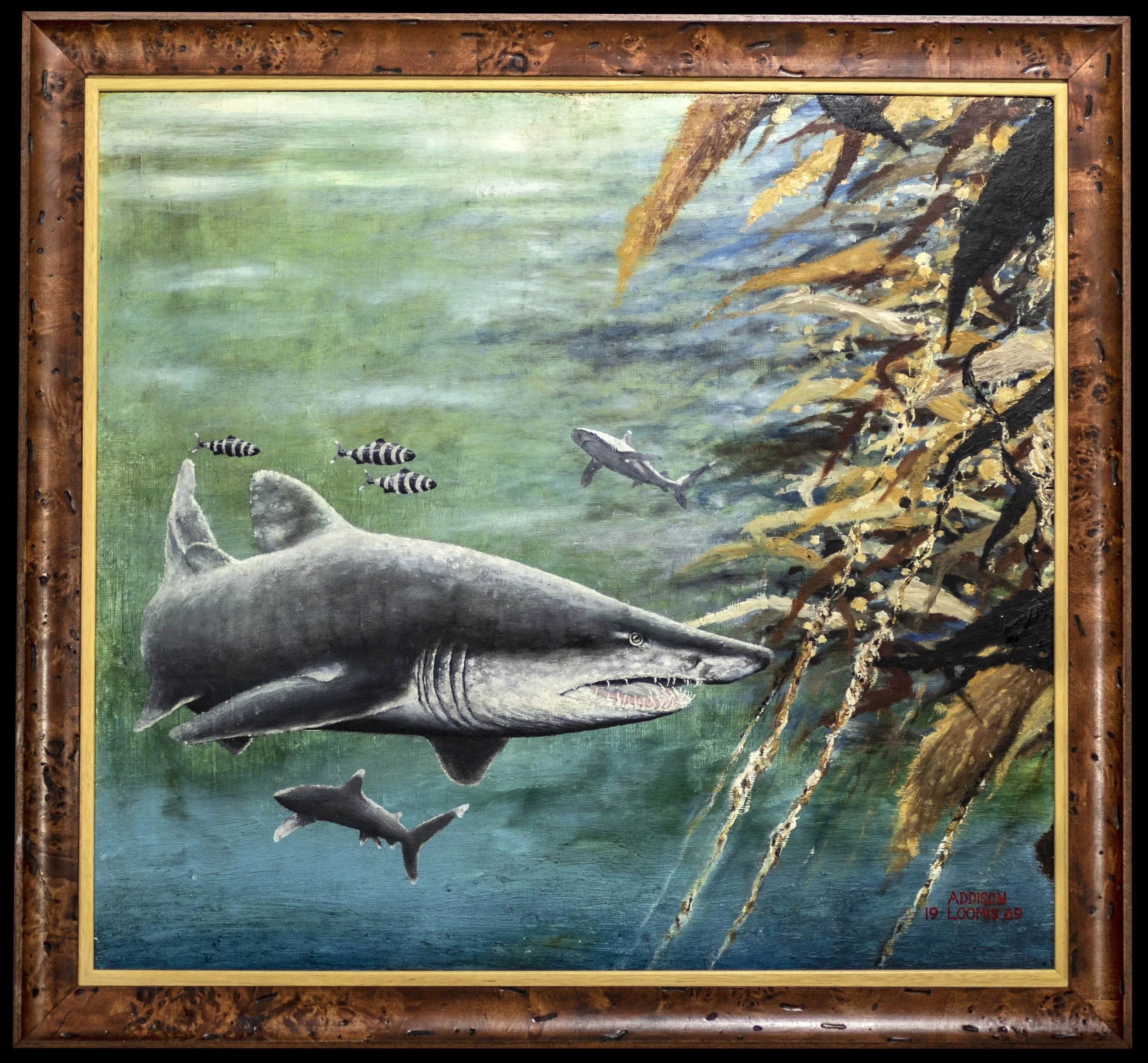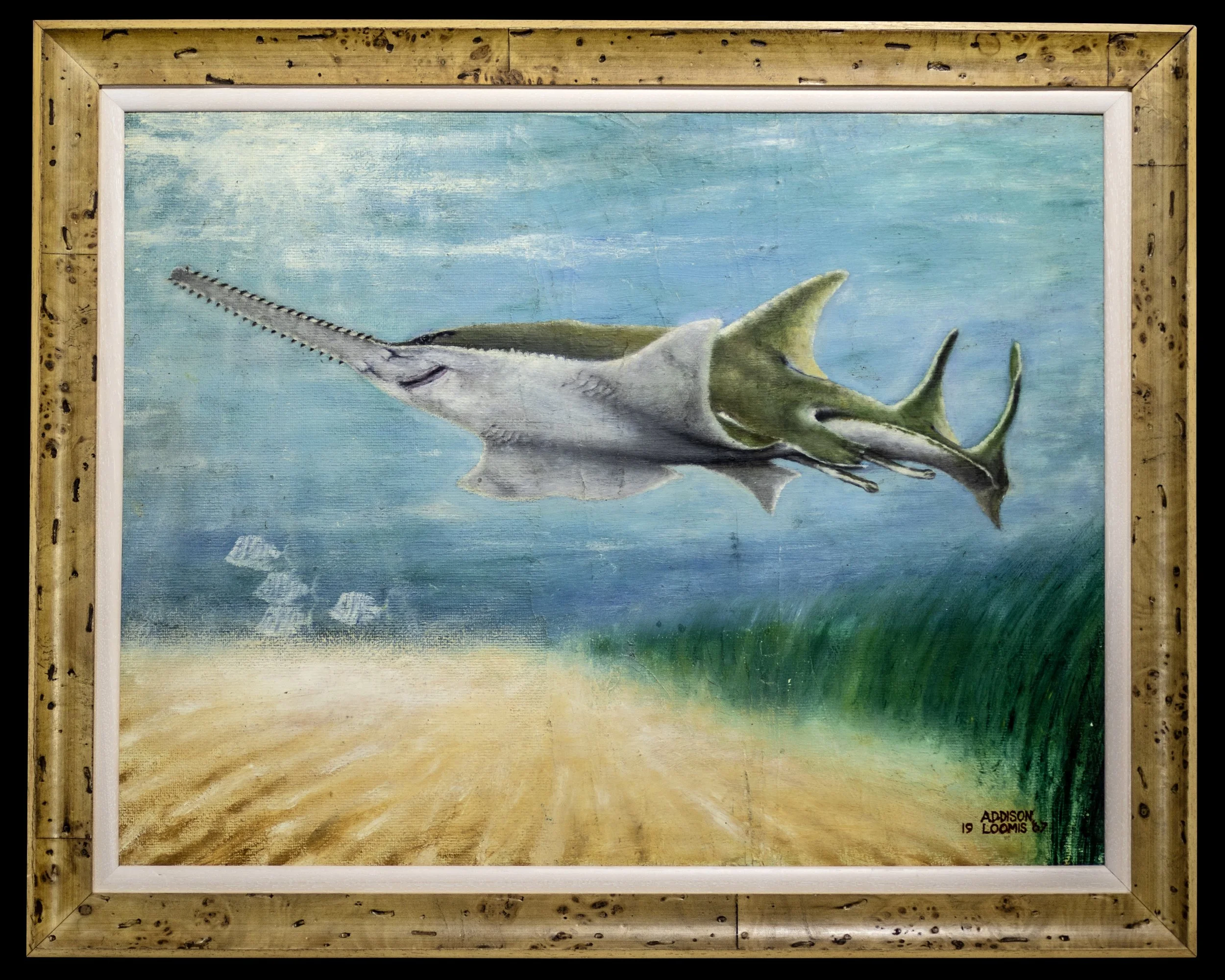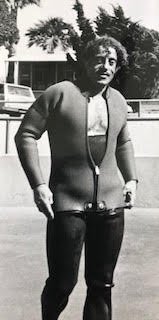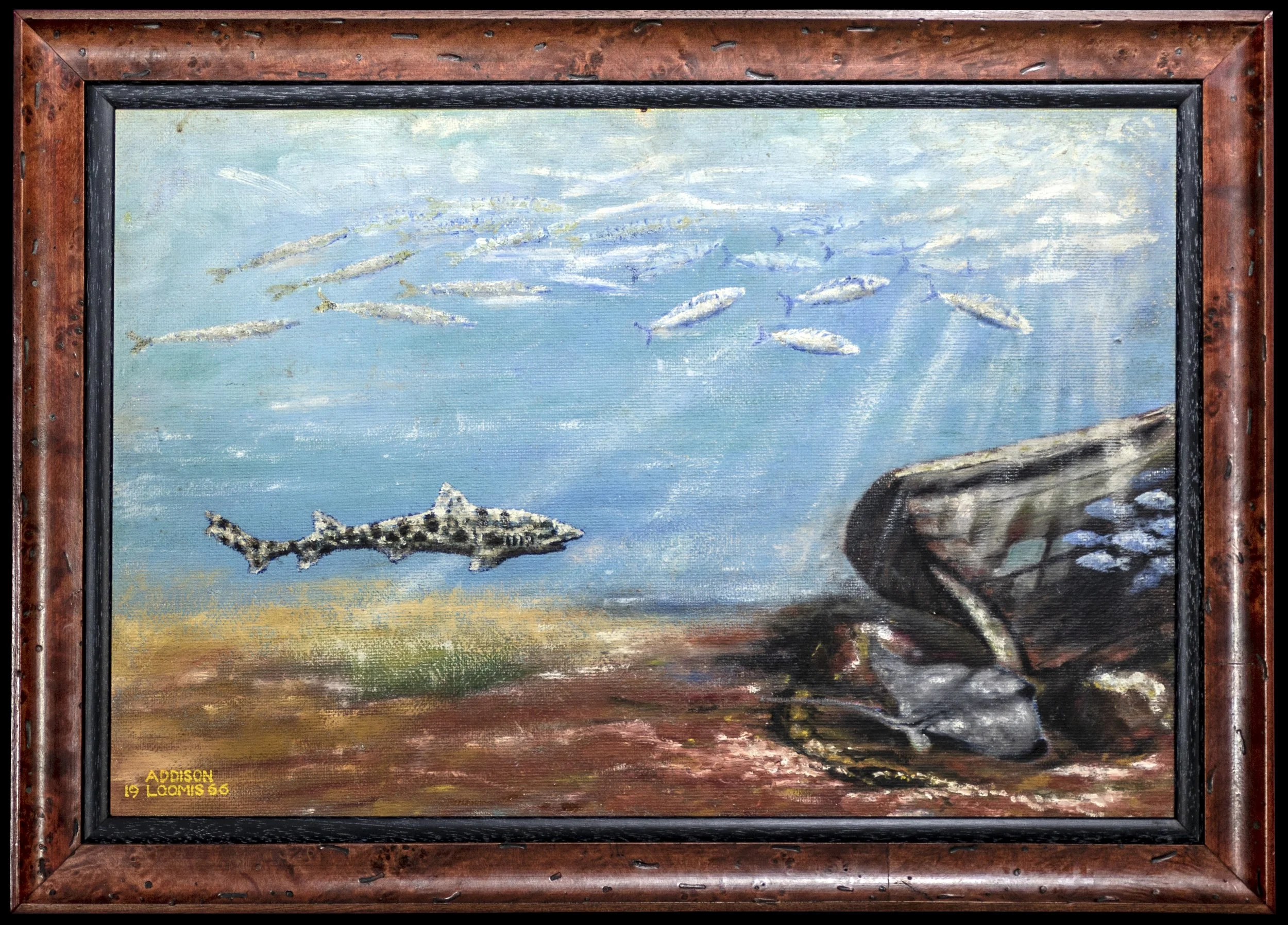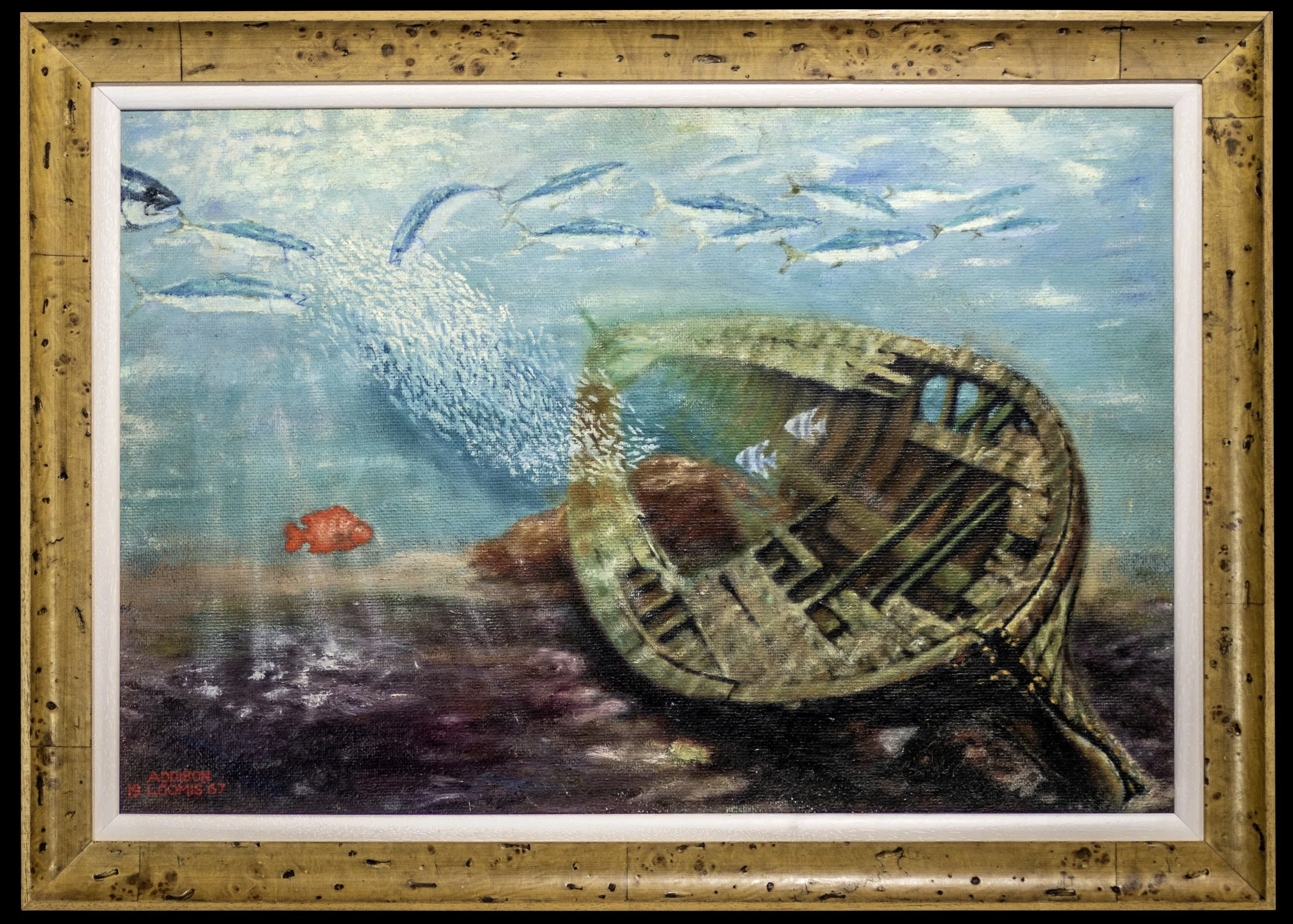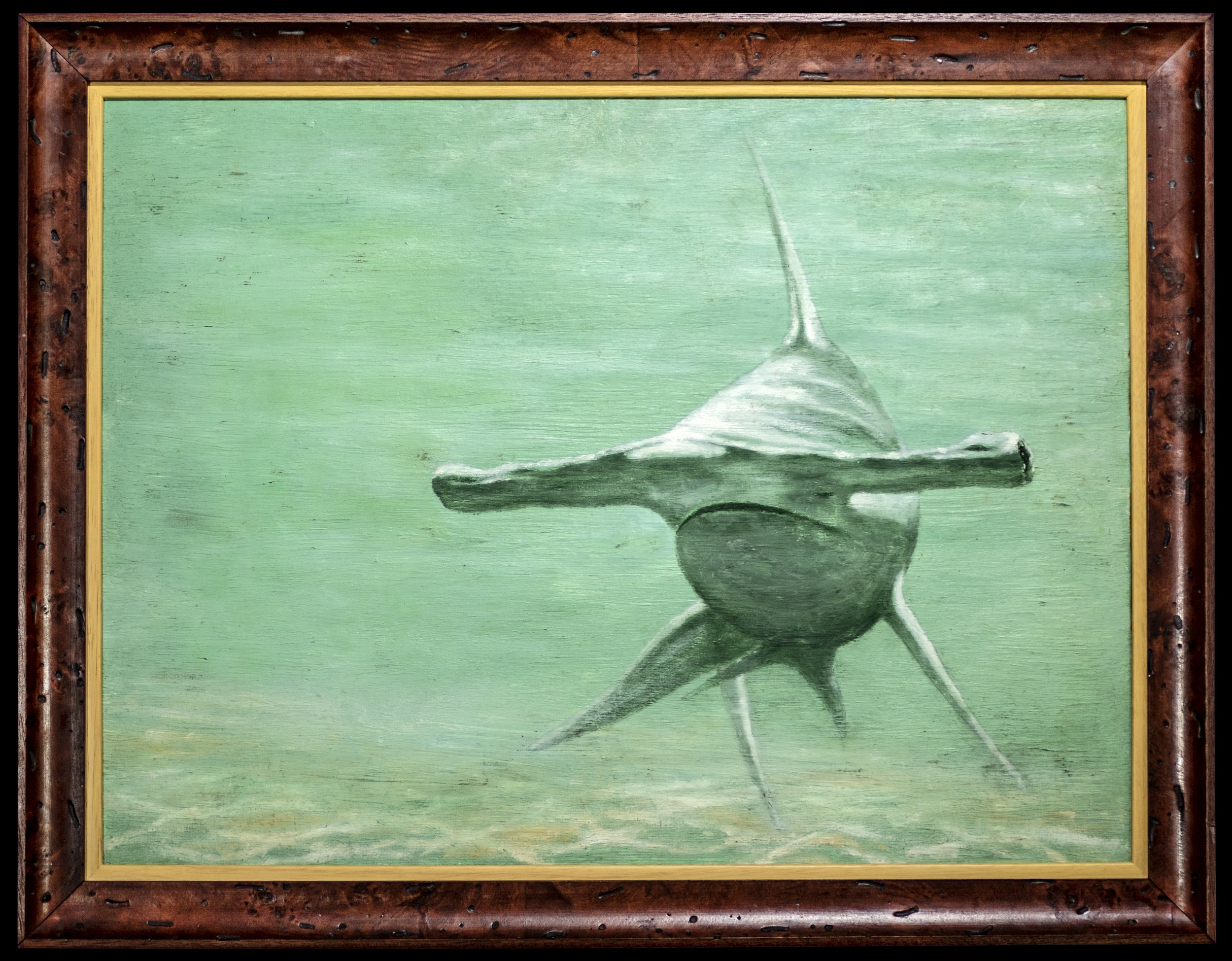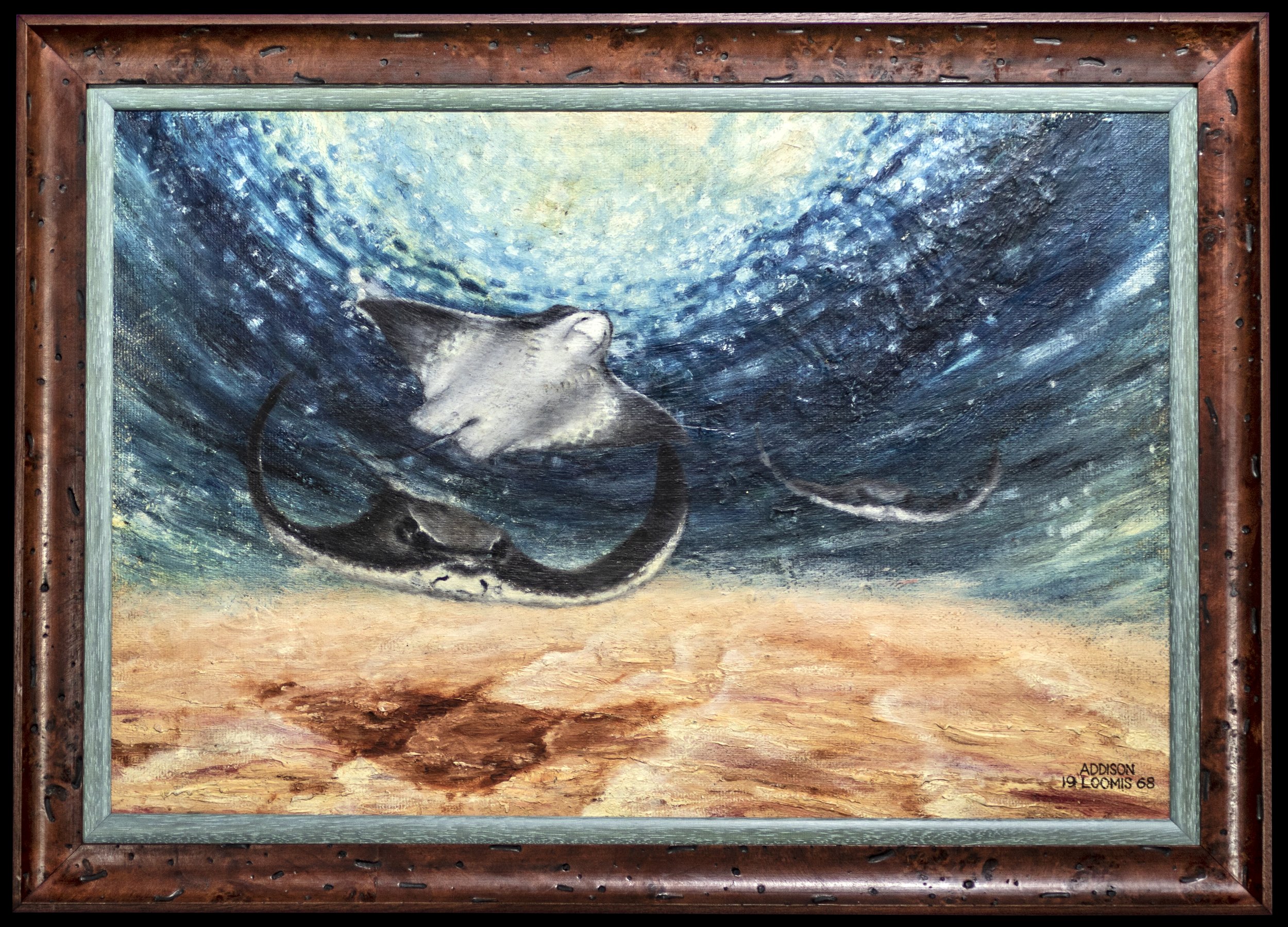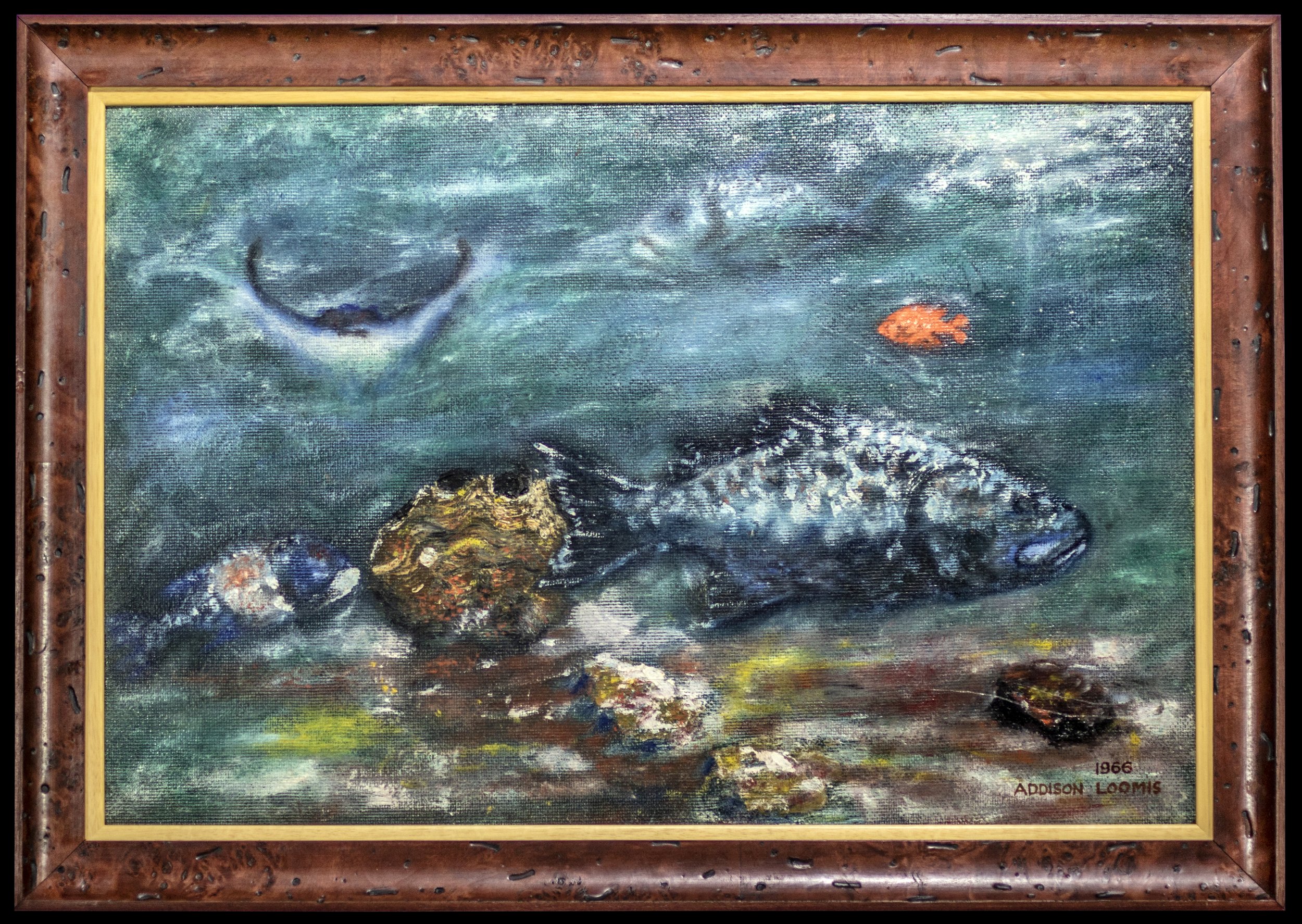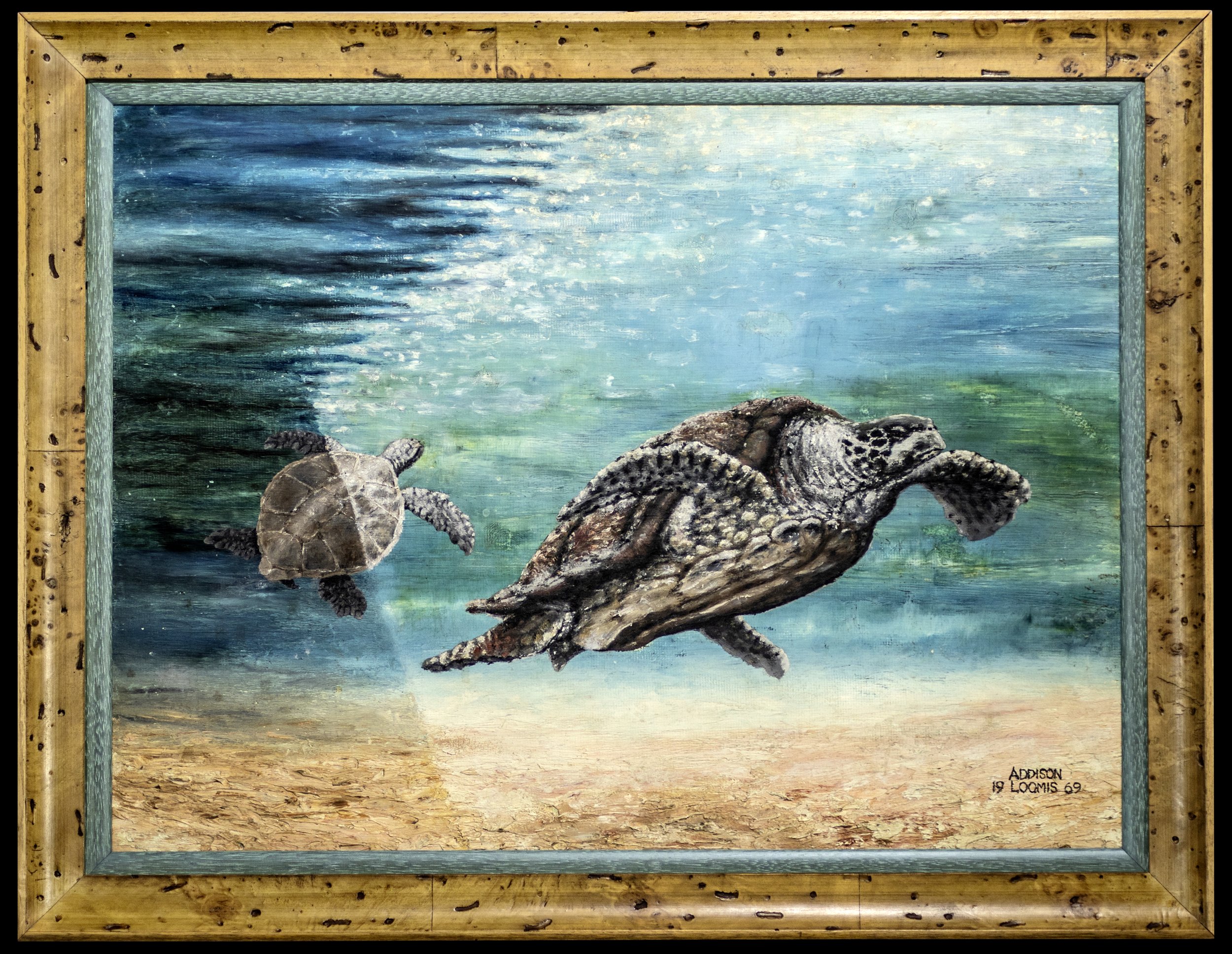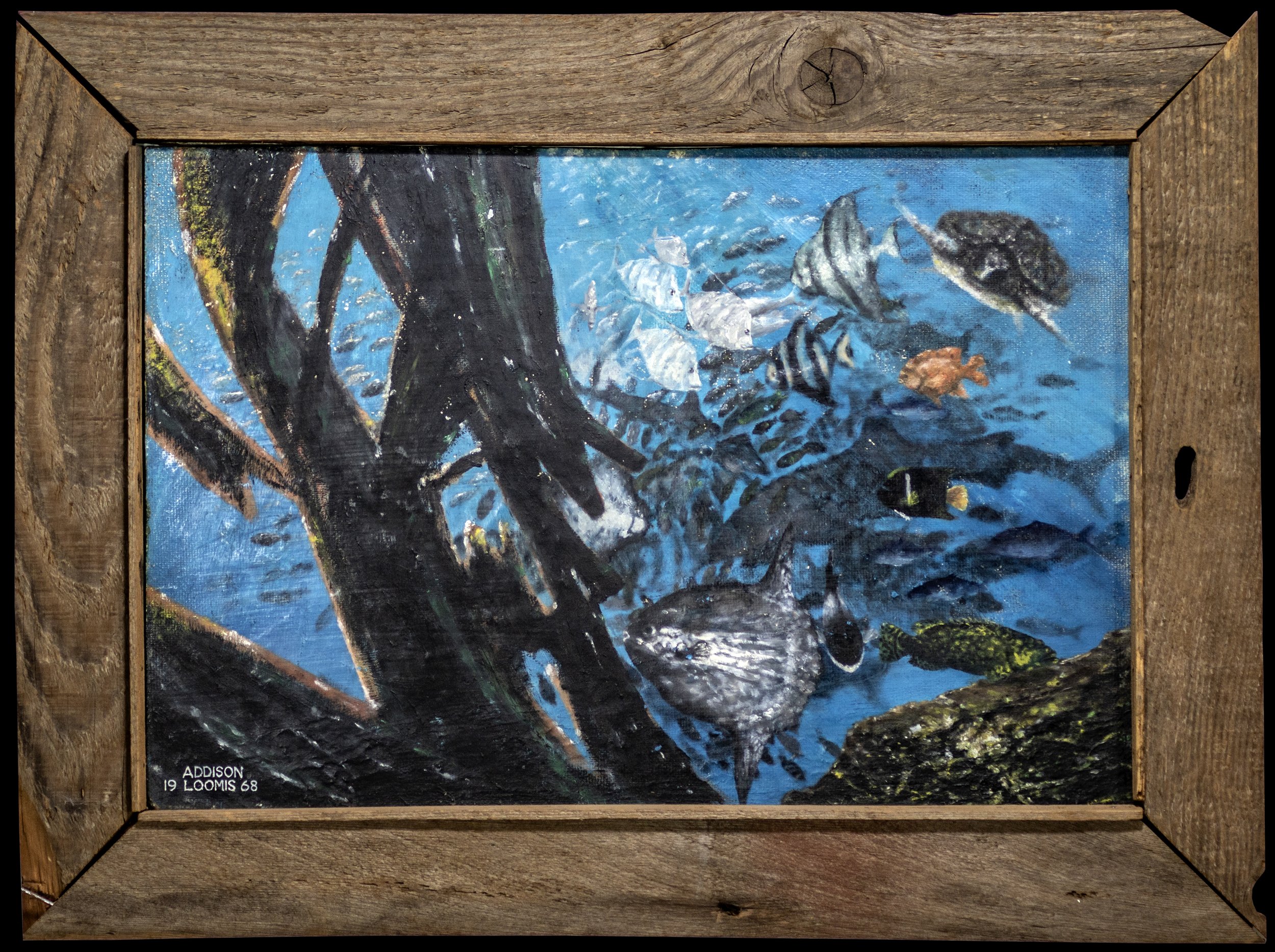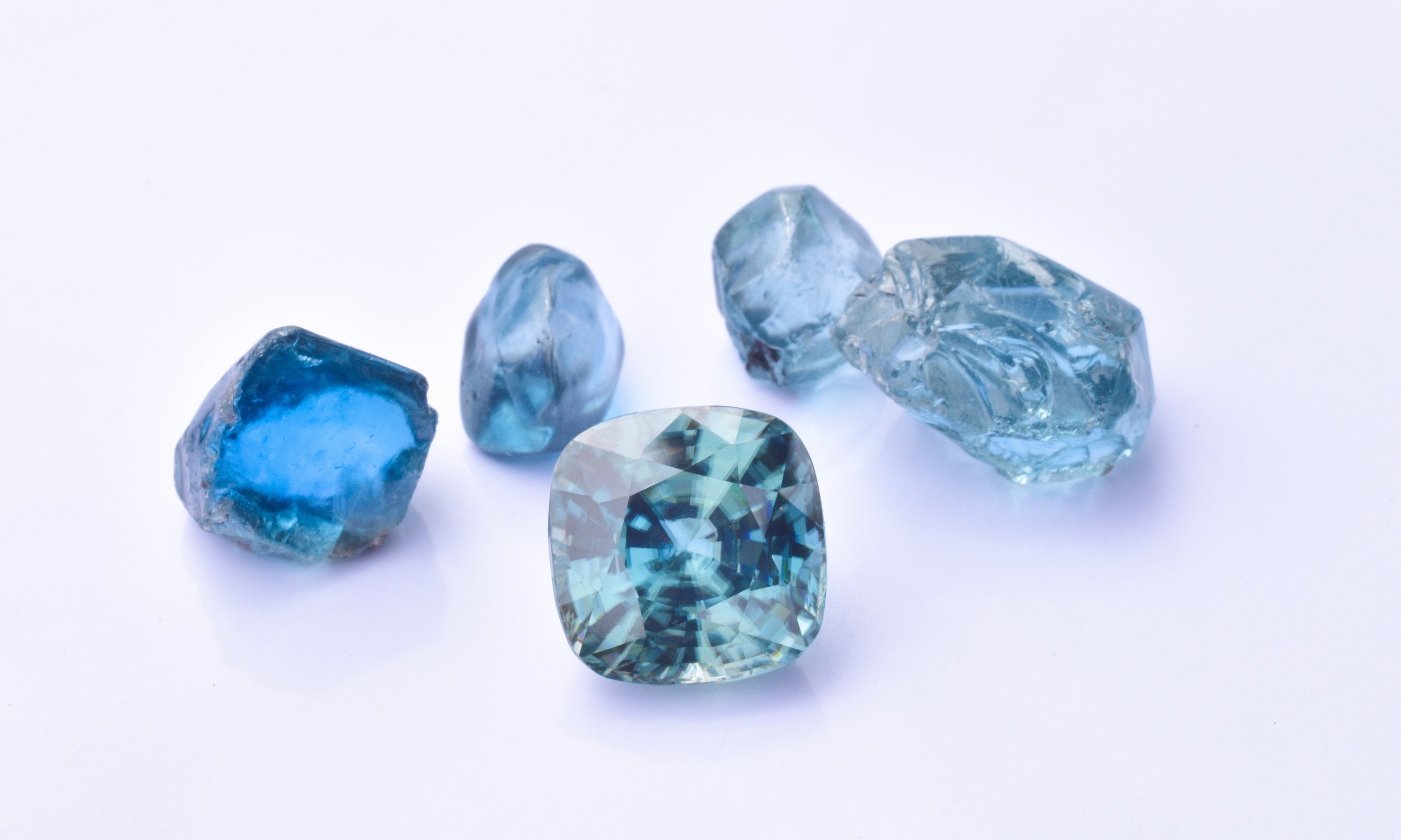The Underwater Artwork of Marineland’s Artist & Underwater Diver Addison Loomis By Contributor Scott Loomis
The Underwater Artwork of Marineland’s Artist & Underwater Diver Addison Loomis
By Contributor Scott Loomis
I was a young boy when my dad went to work at Marineland. It was the early 60’s and he had worked his way up from being a janitor to one of the divers that did the daily shows in the building’s giant “Oval Tank''. Addison Rockwell Loomis, known as “Curly” was an oil painting artist that had a very special gift. It allowed him to see what others could not. Marineland of the Pacific was an Oceanarium and an amusement park on the Palos Verdes Peninsula in southern California that opened in 1958. From 1963 to 1975 Curly performed the daily shows in the four level, 540,000-gallon oval tank, that had a depth of 22 feet and was home to over 4,000 different species of fish from all over the world. It was like a giant aquarium with viewing windows on every level. For years, I grew up watching my dad descend into the tank with his helmet and microphone as he walked around the inside of the tank, talking to the audience that was viewing him through the windows. During the show, he would describe the different types of fish and where they came from, while he was feeding them snacks out of a stainless steel bucket that he carried.
One day a fellow diver asked him if he could do a painting for him, but do it while he was underwater! At first it seemed like a ridiculous idea, but he thought “what if I could capture what I see underwater, on canvas?”. This was the beginning of a journey that would set him apart in the history of oil painting. My dad had spent his whole life perfecting his abilities in several different mediums, but oil was his first love.
In 1966 he began his quest and dove to the bottom of the tank with a blank canvas, lead weights attached to an easel, and the tubes of paint tied to his wrist. He discovered quickly that although the oil paint would not be affected by the salt water, the canvas itself would not “hold the paint”. It flaked off when he brought it up out of the tank and the paint dried. He finally came up with a specially coated moissanite panel that would work perfectly.
On his first attempt it came out of the tank abstract in appearance, even though he used the same technique he always had. The painting did not look like what he actually saw underwater when he brought it to the surface. It came to him that the sunlight from the sky was refracting through the water and through the faceplate in his helmet. Realizing what the problem was, he knew that he had to develop a completely different technique. There was yet another issue. He was unable to mix the paint colors on a pallet, which is typical for proper color blending. So he experimented by blending them on the panel itself, and found a unique method that proved to be the answer. The last obstacle he had to overcome was a time restriction. Due to the cold temperature of the fresh ocean water that was being pumped into the tank, he could only spend about an hour at a time working on a painting. At that point his body temperature would drop too low to continue. Diligently he continued, and with each painting he gained more understanding of his artistry and was able to perfect it. Once he was able to overcome all of these obstacles it took an average of 40 hours to complete each piece.
This underwater studio became a beautiful sanctuary for him. He began to build relationships with a few of the “more curious” residents. One in particular was a 175 lb. 4-foot-long gulf Grouper that would come watch him paint. This gentle giant would rest its chin on Curly’s knee as he painted and waited for some attention, like a scratch under the chin. Curly affectionately named him ‘Jerome’. This playful Grouper, Jerome, was showcased and photographed in many of the news stories and articles that were written about Curly’s work and was also the subject of one of his favorite paintings.
In a span of 10 years, he produced 17 underwater oil paintings, had several publicized underwater art exhibits, and did underwater portraits (sketches) of paying customers that would pose outside of one of the viewing windows. During this time Curly became one of Marinelands main attractions. People from all over the world witnessed my father make history. I vividly remember standing beside hundreds of speechless people as they watched him create something unbelievable. I recall now with a full heart, when I would look at them and say “That is my dad!”.
Many newspapers like the Los Angeles Times and Daily Breeze ran multiple stories over the years, as well as Skin Diver magazine and a host of other overseas media.
Curly left Marineland in 1976 and moved to Colorado to pursue another dream of his. Finally, several years later after trying multiple avenues to promote his artwork, but to no avail. He gave one last effort to see his dream come true. He put all 17 of his underwater paintings in a homemade wooden box, and boarded a bus for New York City. Staying at the local YMCA he spent many days carrying his work on foot, to the promoters he had hoped would embrace his artwork. Defeated by the lack of interest, he got back on the bus and headed home to Colorado. He went on to do a few more paintings, drawings and authored a couple of short stories. Later he moved back to Oregon where he was originally from and passed away at the age of 67 from a brain tumor. Husband, father, grandfather, writer and artist Addison Rockwell Loomis died on May 7, 1989 his dream never realized…
I made him a promise before he passed away, that I would do everything I could to tell his story and see his work be acknowledged by the art world. Finally, after 30 years of my own attempts we were able to get the big break that he had so much desired. On July 27th, 2019 we had the first exclusive exhibit of Addison Rockwell Loomis’s underwater paintings at the world renowned ‘Terranea Resort’ on the Palos Verdes peninsula. On the 10th anniversary of Terranea’s grand opening we were invited to participate in the Marineland employee's reunion that was held there. Terranea is built on the very site that Marineland once stood. 45 years after Curly completed his last underwater painting, he had his first recognized art exhibit on the very spot that they were created! His dream was finally realized!
I continue to keep my promise to my father to tell the story of a man that looked past what he could not see, and bring his talent and creative light to inspire the next generation of artists with the message “Nothing is impossible”.
You can see an article of the exhibit on Terranea's online magazine “Terranea Life”. You can also visit our website at www.arloomisunderwaterart.com
My name is Scott Loomis. I was born in Grants Pass, Oregon in 1959, the youngest of 4 siblings. I have 2 sisters and 1 brother. My early years were spent growing up in Redondo Beach, California, surfing and skateboarding. I went to high school at Aviation High and spent most of my summertime at Marineland until we moved to Colorado when I was 16. The rest of the years I have been told, I should write a book about! I currently live in Destin, Florida and am the proud father of 3 grown children, 2 girls and 1 boy. I also am a grandfather of 3 great kids, 1 boy and 2 girls. My one great passion has been to bring the art and story of my late father to the world so that it may be appreciated.


